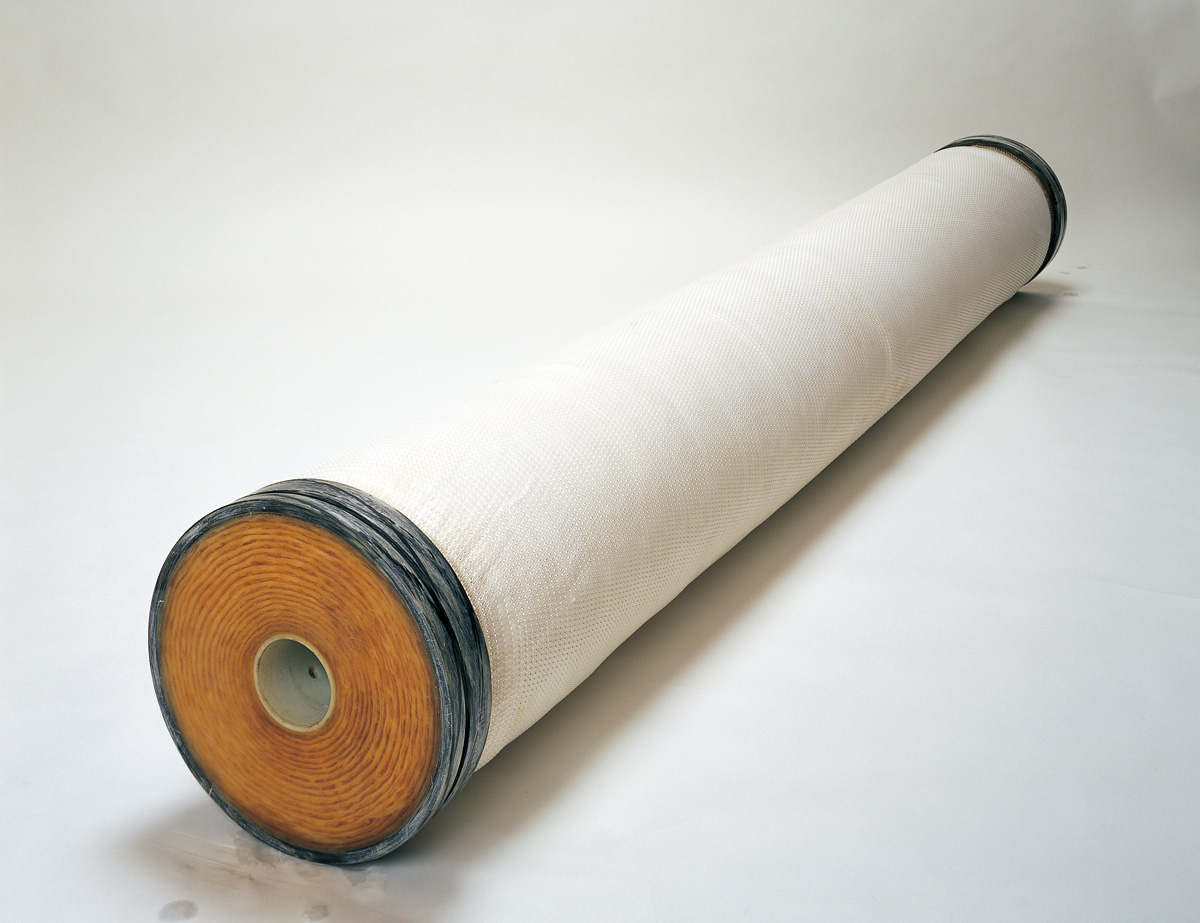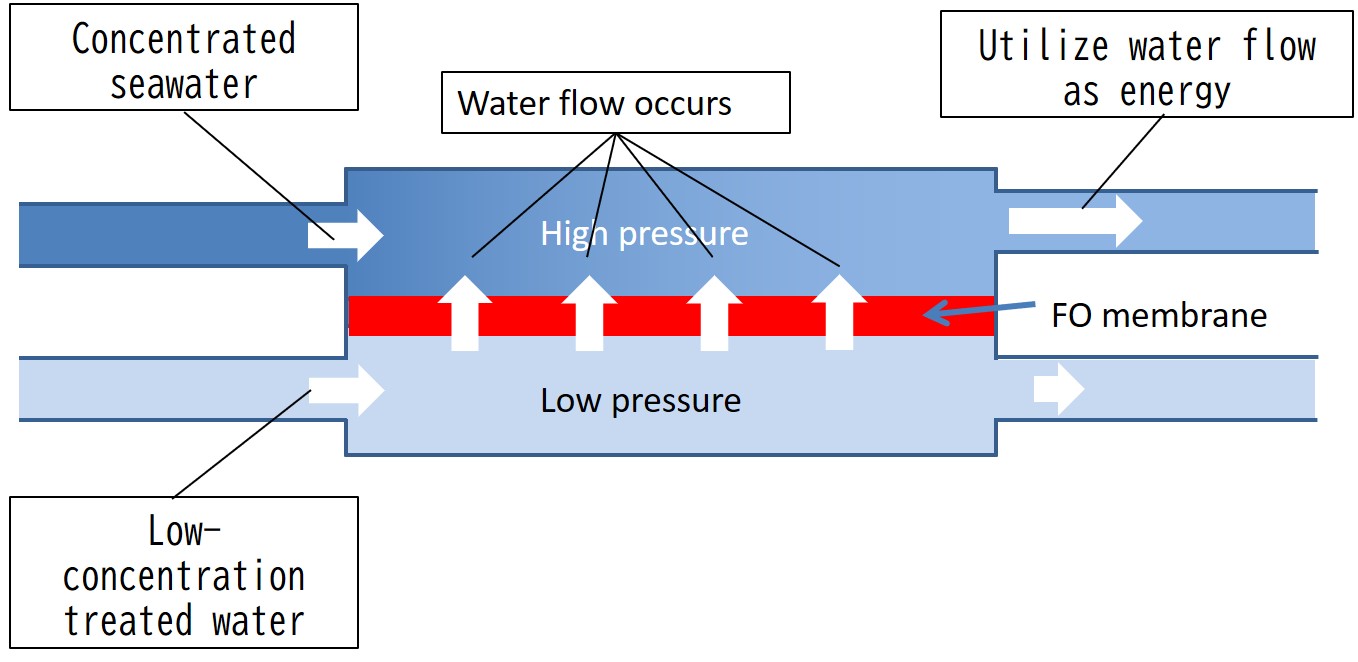Environmentally friendly water treatment system equipped with an FO membrane jointly developed with SWPC and AJMC; provisional patent application filed in the U.S.
Toyobo Co., Ltd. has jointly developed an environmentally friendly water treatment system equipped with a hollow fiber forward osmosis (FO) membrane for desalination plants. The company worked with SWPC (Sustainable Water Power Consultants FZ LLC) headquartered in Abu Dhabi, UAE, a consultant company in the field of seawater desalination, and Arabian Japanese Membrane Company, LLC (AJMC), a consolidated subsidiary of Toyobo, to develop the system, having filed a provisional patent application with the United States Patent and Trademark Office. We will continue to conduct demonstration tests to achieve the system’s early commercialization.

Hollow fiber forward osmosis (FO) membrane

In the Middle East and other places that have little rainwater and groundwater, many desalination plants are in operation for producing freshwater from seawater. Toyobo developed in the 1970s a hollow fiber semipermeable membrane that permeates water molecules but does not permeate molecules and ions above a certain size, by applying spinning technology Toyobo had developed in its textile production business. Toyobo has been supplying the product as a reverse osmosis (RO) membrane for converting seawater into freshwater to desalination plants for many years. At present, the hollow fiber RO membranes manufactured by the Toyobo Group produce about 1.6 million tons of freshwater per day, which is equivalent to water used by about 6.4 million people.
Desalination plants using the RO membrane method produce concentrated seawater with a higher concentration than usual in the process of producing freshwater from seawater. An efficient method to treat this concentrated seawater has been in demand.
To meet this demand, Toyobo, SWPC and AJMC have jointly developed a next-generation environmentally friendly water treatment system, which is equipped with an FO membrane module to efficiently use concentrated seawater, thereby being able not only to reduce the discharge of concentrated seawater but also to utilize the energy generated within the system.
The system first removes salt from seawater by treating the seawater multiple times with the RO membrane, using a method similar to that used in ordinary seawater desalination plants. In this process, high pressure is applied to the RO membrane to remove most of the salt, producing concentrated seawater (A) and freshwater (B). Low pressure is then applied to the freshwater (B) to treat it again with the RO membrane to produce freshwater (B’) with higher purity and treated water (C) with concentration lower than that of seawater.
Next, by bringing low-concentration treated water (C) and concentrated seawater (A) produced in the above process together across the FO membrane in the system, water flow occurs from the low-concentration treated water side to the concentrated seawater side due to the osmotic pressure difference, diluting the concentrated seawater (A) to produce diluted concentrated seawater (A’). The energy resulting from this water flow can be used to power pressure pumps and other equipment in the plant.
The diluted concentrated seawater (A’) can be used again for desalination using the RO membrane because its concentration is similar to that of normal seawater. In the normal desalination process, chemicals are used during the step in which microparticles are removed from pumped seawater. In the system, when the diluted concentrated seawater (A’) is reused for desalination, microparticles have already been removed beforehand, and this step can be eliminated, thus reducing the cost of using these chemicals.
The system, which effectively utilizes concentrated seawater in the above manner, can be easily added to existing desalination plants. Incorporating the system into an existing desalination process not only contributes to reducing the discharge of concentrated seawater, but also can use the energy generated within the system to cover part of the energy required for desalination, thereby contributing to realizing an environmentally friendly water treatment system without requiring a large capital investment.
Going forward, in cooperation with SWPC and AJMC, Toyobo will establish know-how for stable operation of the system through demonstration tests, aiming for its early commercialization. Through the widespread rollout of the system, we will support the operation of seawater desalination plants with low environmental impact and low cost, and contribute to solving the global water shortage problem.
For more information, contact
Public Relations Group, Corporate Sustainability Department, Toyobo Co., Ltd.
MAILpr_g@toyobo.jp
Cautionary Statement
This website contains forward-looking statements that reflect Toyobo's plans and expectations. These forward-looking statements are not guarantees of future performance and involve known and unknown risks, uncertainties and other factors that may cause Toyobo's actual results, performance, achievements or financial position to be materially different from any future results, performance, achievements or financial position expressed or implied by these forward-looking statements.






